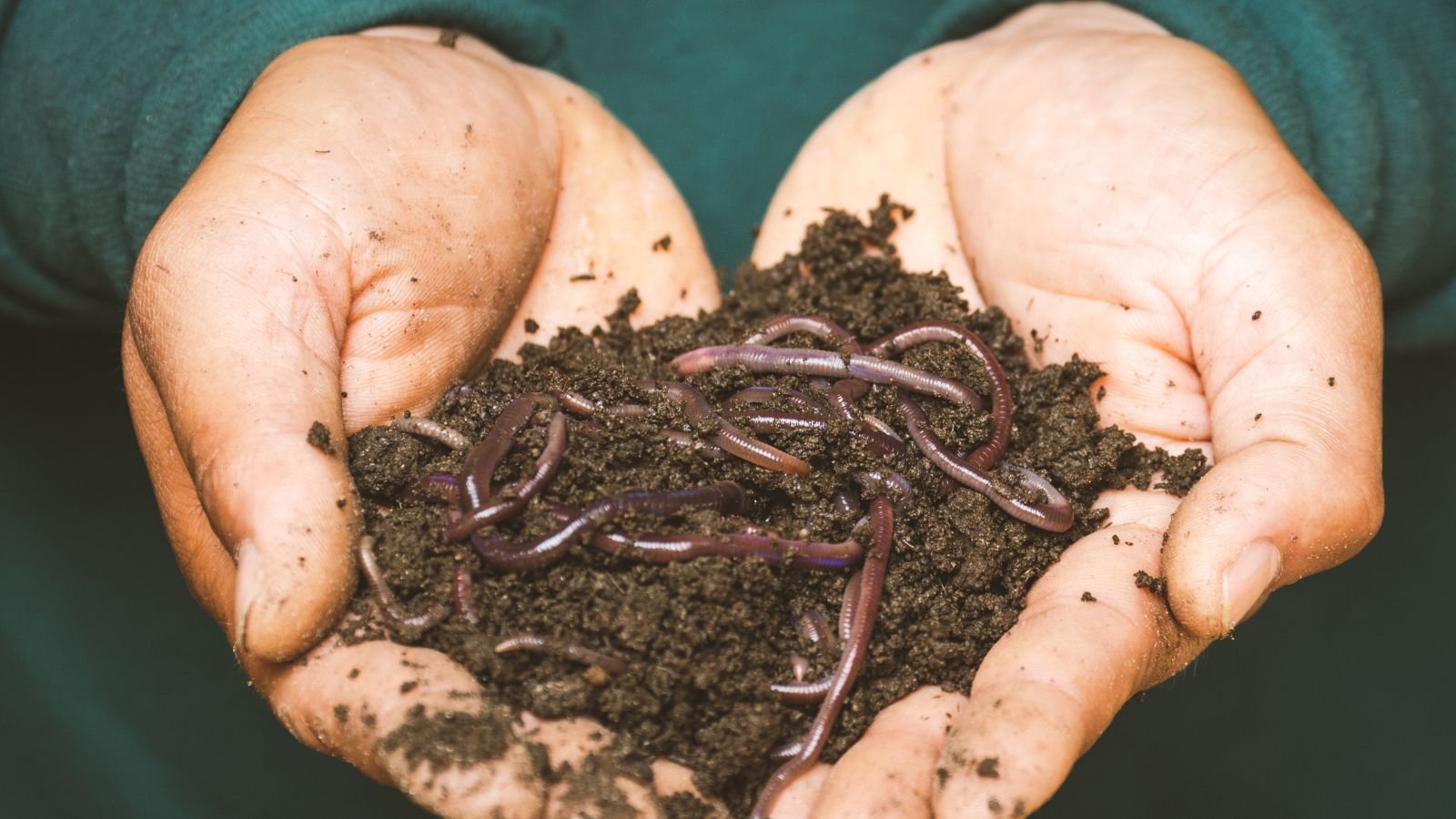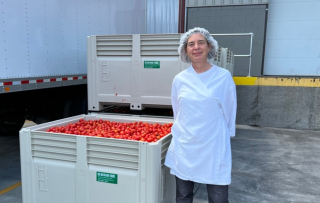Composting food scraps is a relatively easy way for restaurants to reduce greenhouse gas emissions while saving money: it’s the low-hanging fruit in the fight against climate change. But to properly process green waste, efficient composting infrastructure and structural collaborations are essential.
Global waste is predicted to increase to 3.4 billion tons per year by 2050. Food scraps and yard waste currently constitute 20 to 30 percent of what we discard. The majority of organic waste still ends up in landfills, where it releases methane, a potent greenhouse gas. The restaurant and catering industry are among the main producers of food waste globally.
By composting uneaten food and other organic materials, restaurants can significantly reduce their carbon footprint by cutting down greenhouse gas emissions. Compost made from food scraps can help farmers improve soils, cultivate new crops, and enhance water retention. For restaurant owners, there’s also a financial incentive: by separating food waste from other waste types and composting or recycling it, businesses can decrease the volume of waste disposal in landfills or incinerators, which can be costly.
There are numerous approaches to composting for restaurants, and they largely depend on one’s geographical location. In the U.S., disparities exist among states. For example, California has a robust composting infrastructure, whereas other states lack it completely. The U.S. Composting Infrastructure Coalition is advocating for and seeking funds to develop critical composting infrastructure nationwide.
The cost of composting may vary, based on a restaurant's size and location. On-site composting requires an initial investment in equipment, compost bins and education. However, it can lead to long-term savings for waste disposal. Collaborating with local composting services can also include subscription fees.
A seven-step plan to begin foodservice composting:
1. Waste assessment: Gauge the volume of food waste produced in the restaurant, and the space available for composting. Decide on composting on-site, or partnering with a local composting facility. If you opt for on-site composting, choose an indoor or outdoor location and determine the necessary compost equipment.
2. Set up compost bins: Place compost bins strategically within the restaurant and label them clearly. Start by placing countertop bins in prep areas for easy access. Given that coffee grounds can be converted into valuable compost, ensure a bin is near coffee machines. It's essential to keep larger compost bins in a cool, dry, shaded, and ventilated spot to minimize odors.
3. Establish a collection system: Implement techniques ensuring the organic materials collected decompose effortlessly. Regular collection schedules should be created to prevent pile-up, and guarantee timely transfer of organic waste to the composting site.
4. Partner with a local composting facility: If on-site composting isn’t viable due to space constraints, consider partnerships with local composting facilities or community gardens. They’ll collect the organic waste at your doorstep and compost it at their location.
5. Monitor and analyze: Composting, while mostly self-sustaining, requires some maintenance. Managing odors, moisture levels, and temperature is crucial. Proper aeration, turning the compost pile, and adding bulking agents like wood chips or dry leaves can optimize the decomposition and yield high-quality compost.
6. Educate staff: Composting succeeds when everyone is on board. Ensure that all staff members are aware and understand the composting program, train them on procedures, and provide continuous education.
7: Use the compost: Composting may take months or even a year to yield usable soil. Once ready, use the nutrient-rich compost in the restaurant's garden or donate it to local organizations, like community gardens, schools or nonprofits.
As required by law
Traditionally, composting was an activity eco-conscious individuals undertook in their backyards. However, in recent years, both governments and the foodservice industry have shown interest due to environmental concerns and economic opportunities. To scale composting efforts, a solid infrastructure is essential, necessitating partnerships.
In the U.S., San Francisco leads the way. In 2022, a mandate requiring residents and businesses to recycle green waste took effect. By 2024, penalties will be imposed on non-compliant entities. San Francisco's Mandatory Recycling and Composting Ordinance mandates that residents and businesses correctly segregate compostable materials.
A local Bay Area company called Recology supports waste management in San Francisco, and has produced impressive results: 80% of the city's waste no longer ends up in landfills. Daily, over 500 tons of compostable materials are gathered from green bins placed by residents and businesses. This green waste gets transformed into compost and is spread across the West Coast, benefiting farms, vineyards, and orchards. The initiative brought San Francisco global recognition, attracting over 135 international delegations to study the city's composting and recycling systems.

USDA supports composting innovations
Recently, the U.S. Department of Agriculture (USDA) committed to investing over $9.4 million in 45 cooperative agreements. These support innovative, scalable waste management plans to divert food waste from landfills. Some of those funds will boost composting projects. Terry Cosby, head of the USDA's Natural Resources Conservation Service (NRCS), stated that approximately 4% of U.S. greenhouse gas emissions result from uneaten food. "That's why local projects are crucial for climate solutions," he remarked, highlighting initiatives that supply compost to schools and community gardens. These projects will be executed between 2023 and 2025.
Composting systems:
DIY compost pile: For a simple composting method, choose a piece of land to create a compost pile. Lay down garden tiles to build on; the composting process accelerates if the compost pile is turned over every six weeks.
Outdoor compost bins: If space allows, outdoor composting units are available. Some systems categorize composting into three stages. For limited spaces, compost bins, often made of plastic, are an alternative.
Worm hotels: With the aid of compost worms, you can establish a worm hotel, a rising trend in the hospitality sector. Several respected restaurants in Amsterdam are known to have their own worm hotel. The worms convert organic waste into compost.
Bin-sized indoor food composters: These indoor composters produce odorless, sterile, nutrient-rich fertilizer. An apt description might be "food recycler" as they don't yield typical compost. These recyclers use heat and aeration to dehydrate food waste, resulting in a dry, sterile product within 24 hours. Once mixed with soil, the material regains much of its beneficial bacteria.
Industrial indoor compost equipment: Large-scale machines are available for composting substantial amounts of food waste. Their capacities range from 50 pounds per day for smaller venues to over 3,000 pounds for larger establishments, like hotel chains, supermarkets or food processing plants.
Food waste-upcycling service: Some of the most interesting innovations in this space don’t technically count as composting. Mill is the first all-inclusive household food-recycling service. This table-to-farm solution helps customers turn their food scraps into chicken feed. It consists of a kitchen bin that dries, shrinks, and de-stinks food scraps combined with a subscription service that picks up the dried food waste.
.jpg-28x28.jpg) Written by
Written by 
.jpg-300x300.jpg)
.jpg-50x50.jpg)





























